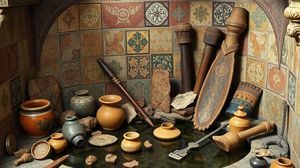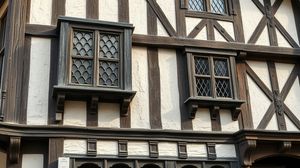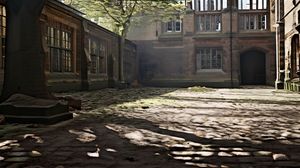
The Clerk's Well in Clerkenwell, London, is a historic site dating back to medieval times. It is known for giving the area its name, "Clerkenwell." The well was originally the site where parish clerks would perform mystery plays during medieval festivals, drawing in crowds with their theatrical renditions of biblical stories.
The well itself was rediscovered in the 1920s during building work, tucked away in a basement. This discovery unearthed a significant piece of London's history, providing insight into the city's medieval past and the cultural importance of such wells.
Visiting Clerk's Well offers a glimpse into the ancient water systems that once served the community. Archaeologists and historians have found this site to be particularly valuable for understanding the engineering marvels of the time, as the well's water source was ingeniously constructed to naturally flow through the site.
One fascinating aspect of Clerk's Well is the sheer depth of the original structure. The well itself is an incredible 43 feet deep and was once a central feature in public health for the medieval settlement of Clerkenwell.
The historical significance of Clerk's Well extends beyond its practical uses. It is closely tied to the development of London's broader culture, particularly as a focal point for community gatherings and local festivities. These gatherings laid a foundation for what would become one of the city's bustling and vibrant neighborhoods.

Making the Most of Your Visit:
Start your visit by checking out the sessions offered by the Islington Archaeology & History Society, which often organizes tours or talks about the well. This can give you a richer context of the site's importance and discoveries.
Make sure to spend some time in the adjacent St John's Square after your tour. The square has an intriguing historic atmosphere and offers a pleasant setting to reflect on what you've just learned at the well.
Look out for the markers and exhibits around the well that explain its rediscovery in the 1920s. They offer detailed insights into the architectural work of the period and will enhance your appreciation of this hidden gem.
Visit during a weekday afternoon if possible. This timing often means fewer visitors, allowing you a more intimate and personal experience with the site.
After visiting Clerk's Well, explore the nearby streets for a sense of how the modern city overlays its ancient routes. Clerkenwell is filled with layers of history that you can see peeking through in its buildings and street layout.

Visiting Times & Costs:
Clerk's Well is open to the public, but access is limited to specific times as it is located within the basement of a building that houses the Islington Local History Centre. It is best to check in advance for the current visiting times or scheduled tours.
Opening Times:
- Access is typically available during special events or tours organized by the Islington Archaeology & History Society or the Islington Local History Centre.
Cost:
- Visiting Clerk's Well is generally free of charge, though some special events or guided tours might have a fee.
Accessibility:
- Access to the well may be challenging for those with limited mobility, as it is located in a basement area.

Address & Map:

Nearby:























